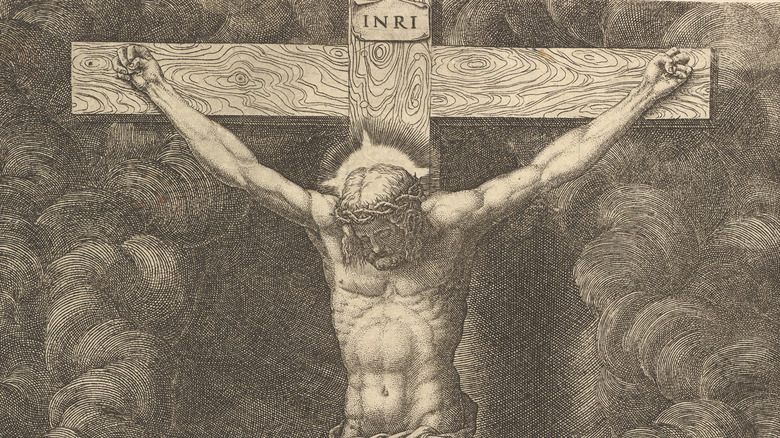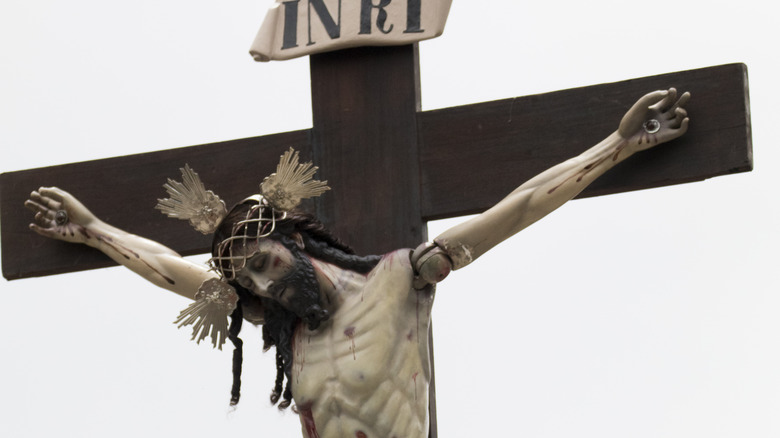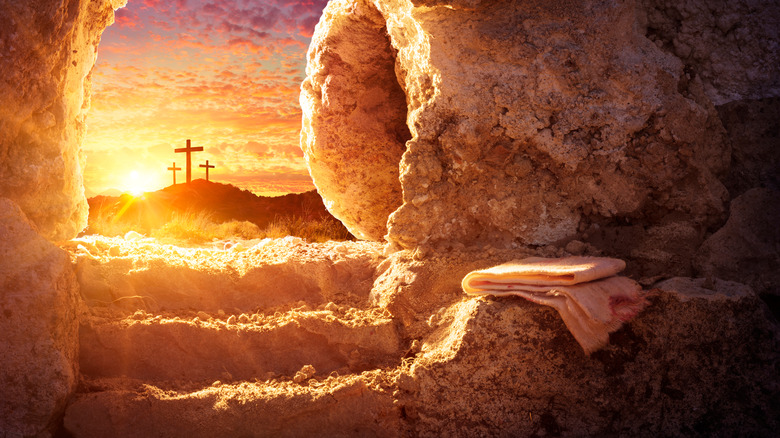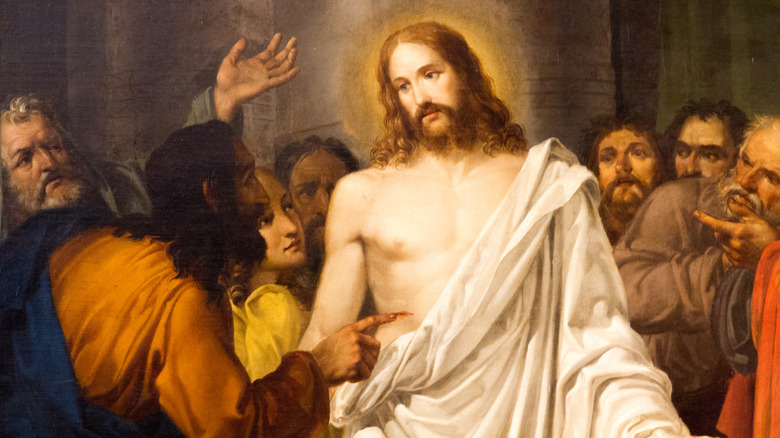What Really Happened After Jesus Died?
One of the key events in all of the Christian Bible's New Testament is the death of Jesus Christ. Of course, his death was the necessary prerequisite for the main event in all of the text: his resurrection from the dead, the miracle that forms the supernatural basis for the entire religion of Christianity. Nevertheless, despite his death being a single part of a larger narrative, the four Gospels — Matthew, Mark, Luke, and John — collectively give a full picture of the events that took place before and during his crucifixion. This includes his betrayal by Judas, his sham trial, the torturous and prolonged death he endured on the cross, and the statements he made while dying. Further, the narrative doesn't go silent following Jesus' final breath and then pick up again when he reveals that he's been resurrected — quite a bit happens after Jesus' death, much of it dripping with theological significance.
An earthquake and a metaphor
The gospels of Matthew and Mark both note that after Jesus took his last breath, an event took place in another part of the city, likely miles away from where Jesus was killed. Specifically, the writers both mention "the curtain of the temple" being torn in two, "from top to bottom." According to the Christian question-and-answer column Got Questions, the writers are referring to a veil of sorts that hung in the temple, physically and figuratively separating the room where God's very presence was said to linger from an outer chamber. The garment was said to be as thick as a man's hand (about 4 inches). Therefore, the veil being torn in two on Jesus' death was something of a metaphor for the barrier between God and man having been destroyed, the column notes.
Matthew also adds that Jesus' death was followed by an earthquake so powerful that rocks split, after which tombs opened, and the dead walked out, alive and well. Luke notes that the crowd wailed and grieved before dispersing, while John notes that the soldiers were set to break Jesus' legs to hasten his death but did not do so. Instead, a soldier pierced Jesus' side with a spear, and blood and water flowed out.
Jesus' body was curated by a rich supporter
Once Jesus had died, his disciples were left with the matter of his body and what to do with it. At the time, there were customs in place laying out how Jews were to deal with the body of a loved one. The problem was that the disciples were, in essence, unemployed vagabonds in the care of an itinerant preacher, with little money or assets (such as a family tomb) between them. Enter Joseph of Arimathea, a wealthy man who had himself become a follower of Jesus. All four gospels give effectively the same narrative: Joseph approached Pilate and asked for permission to care for the body. In keeping with the Jewish burial customs of the day, Joseph had Jesus' body wrapped in cloth and covered in burial spices, then placed in the tomb, with a large stone covering the entrance. Pilate then ordered guards placed outside the tomb.
The narratives of all four gospels go silent at this point, noting that his disciples — in particular, his female disciples — wanted to observe the Sabbath and leave the body alone.
Jesus stuck around for a while after his resurrection
Following Jesus' resurrection, when he first revealed himself to the women who had gone to his grave, the four gospels give different accounts of what happened next. Matthew ends with the resurrected Jesus giving his followers instructions on carrying on his ministry, while Mark's account just ends. Luke, on the other hand, goes into great detail about how Jesus played a game of sorts with his disciples, keeping his true identity hidden for a while as he talked to them before finally spilling the tea. Further, John's account notes that Jesus revealed himself to his disciple Thomas, who steadfastly believed he was seeing a ghost, compelling Jesus to show his disciple his wounds and giving us the English phrase "doubting Thomas."
The gospels are actually unclear on how long Jesus stayed on earth after his resurrection, but over in the Book of Acts, the writer — traditionally Luke — fleshes out the story. Specifically, Luke notes that Jesus stayed around for 40 more days after his resurrection, during which he continued to remind his disciples he was alive and provide them with instructions about what they were to do after he left. The narrative about Jesus' time on earth ends with Luke describing the prophet being taken up into heaven as the disciples watched, only for two angels to show up afterward and reprimand them for staring at the sky!



